Moto G7 Power Review
Moto G7 Power Review
Humble specs, a huge battery and a temptingly low price
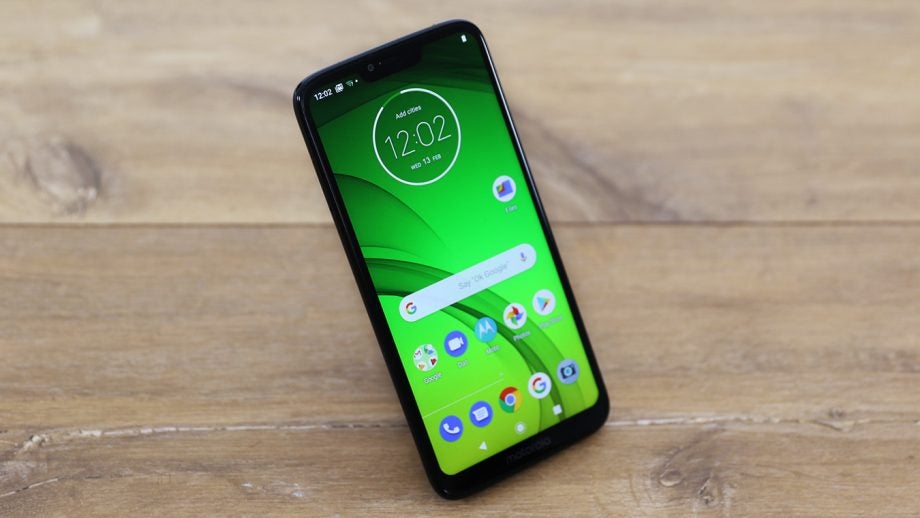
Verdict
The Moto G7 Power is excellent value for money. It's not perfect, but you'd be hard pressed to find a phone as good for the same price.
Pros
- Excellent battery
- Robust performance
- Premium look and feel
- Superb value for money
Cons
- Average camera
- Muffled voice calls
Key Specifications
- Review Price: £179
- 6.2-inch HD+ screen
- Snapdragon 632 CPU
- 4GB RAM
- 64GB storage, microSD
- 12-megapixel rear camera, 8-megapixel front camera
- Android 9
- 5000mAh battery
What is the Moto G7 Power?
The Moto G7 Power is a budget Android phone with a big battery. And I mean BIG. The huge 5000mAh cell promises to give you “over 60 hours of active use,” according to Motorola.
Most big flagship phones, like last year’s Samsung Galaxy S10 Plus and Apple’s iPhone XS Max have 4100mAh and 3174mAh cells respectively, which should give you some idea of what we’re dealing with here.
Furthermore, the Moto G7 Power features a relatively low-resolution screen – 1520×720 pixels – meaning in theory, it’s going to be less power-demanding than the 2960 x 1440 and 2688 x 1242 pixel displays of these higher-end phones.
Unfussed about the latest and greatest but ‘just want a decent phone with a battery that lasts all day’, or know someone who does? Priced at around £179 unlocked and SIM-free, the Moto G7 Power just might be that phone.
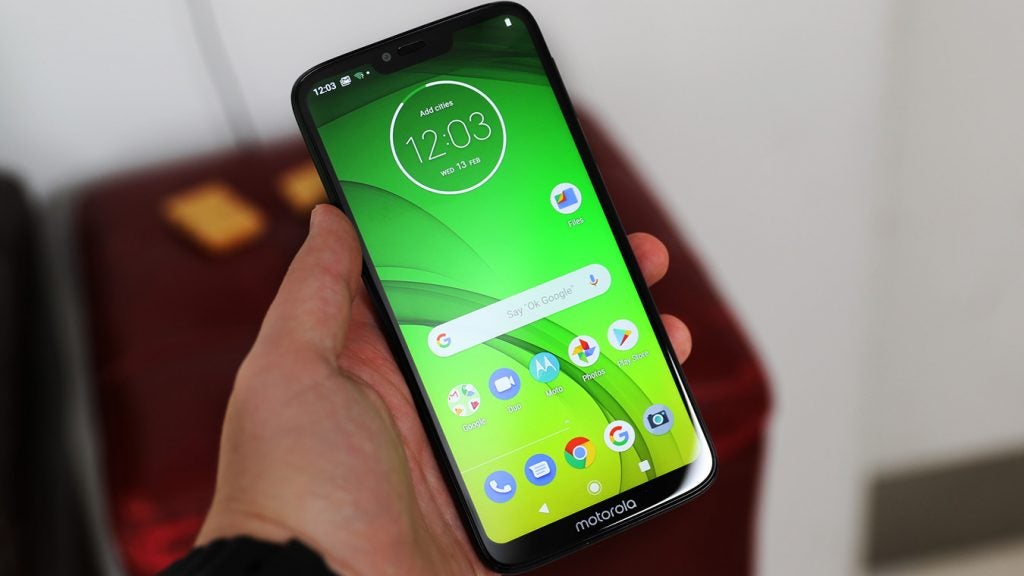
Reassuringly inexpensive – the Moto G7 Power is under £200, but sometimes feels like it should cost a lot more.
Moto G7 Power – Design
The Moto G7 Power is one of four new phones announced by Lenovo (which owns the Motorola consumer brand) ahead of Mobile World Congress this year.
As such, it looks a lot like the Moto G7 – in other words, a simple black metal body that’s covered in a layer of protective Gorilla Glass. As such, the phone feels slinky (it weighs a mere 193g) and premium.
The metal and glass body feels reassuringly cool to the touch. As glass-coated phones go, it doesn’t pick up fingerprints as much as you might expect either, though you will on occasion need to bust out a microfibre cloth (or the hem of your shirt) to keep it looking spotless.
The review model I was sent came with a clear plastic case, so most of the time, this wasn’t really an issue.
Related: Moto G7 Plus
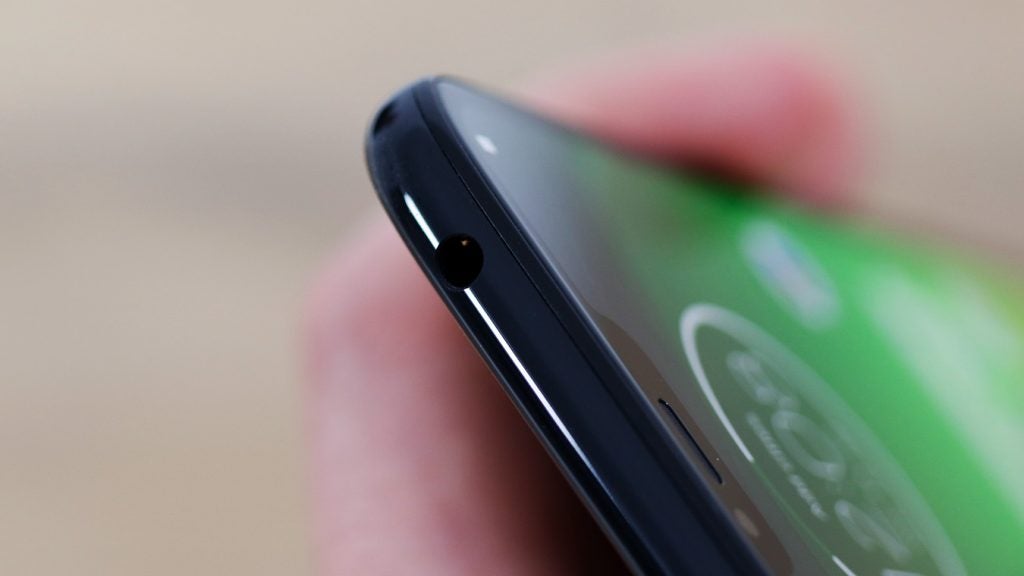
While the Moto G7 Power cops a lot of current smartphone features, it doesn’t do away with the old 3.5mm headphone jack.
The volume rocker and power key sit up on the right hand side of the phone, and a combination SIM and microSD card tray sits opposite. A Type-C USB sits at the bottom, for all your data and charging needs. And pleasingly, for those of us yet to ditch our old headphones (or shell out for an adapter), there’s a 3.5mm headphone jack sitting up on the top side of the Moto G7 Power, meaning you can keep the battery topped up overnight while drifting off to a podcast.
On the back, a large circular camera module takes pride of place. This houses a single 12-megapixel f/2.0 camera lens that’s equipped with a single LED flash, and sits above a circular fingerprint scanner bearing the Motorola ‘wings’ logo.
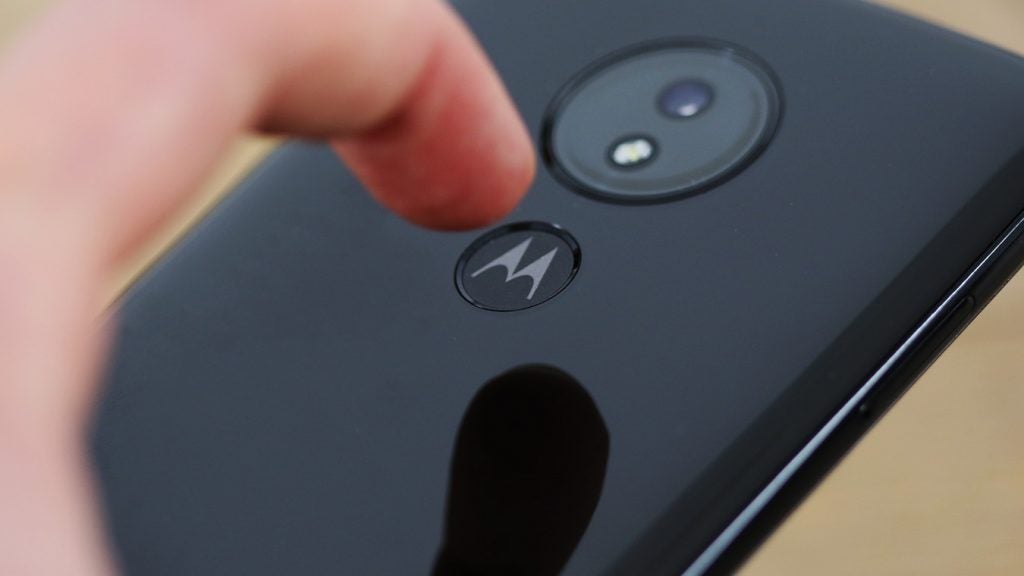
Placing the fingerprint scanner on the back of the phone is a smart move, as it means that whether you hold the Moto G7 Power in your left or right hand, most folks will hold it in such a way that their index finger comes to rest right where the scanner is, meaning you’ll be able to pick this up and unlock it in one motion. This isn’t something that’s by any means unique to the Moto G7 Power – plenty of other feature fingerprint scanners in this position – but it’s a nice addition all the same.
The 6.2-inch touchscreen is notched, so you get a little indentation housing the speaker and front-facing camera jutting into the screen. The notch is a little heavier than it is on the Moto G7 Plus here. Notches might be out of fashion soon, if the Samsung Galaxy S10 hole-punch cut becomes the next big mobile trend. As notches go, the G7 Power’s bulge is not a massive intrusion. You’ll only really notice it if you choose to watch videos in fullscreen mode. Most of the time, the margins will be filled with black pixels.
Design-wise, the Moto G7 Power is simple and unfussy, and, considering how much you’re being asked to pay for it, pretty classy.
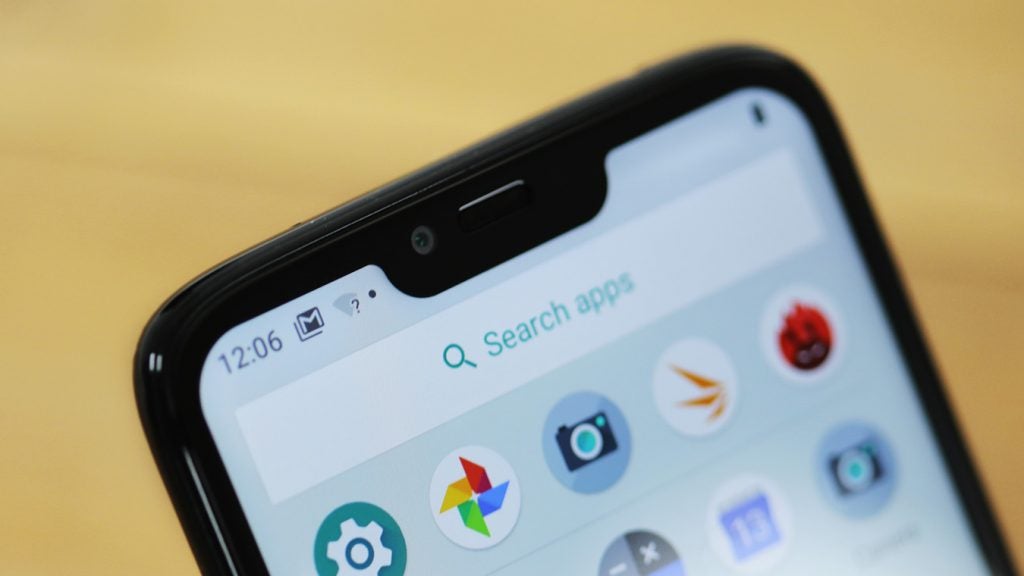
Notches might be on the way out, but the Moto G7 Power’s indentation isn’t that intrusive.
Moto G7 Power – Screen
The Moto G7 Power’s LCD screen measures 6.2-inches corner-to-corner and packs 1520×720 pixels into that space. This gives you 271.2ppi (pixels per inch), which is not particularly high in this day and age. The display’s aspect ratio is also an uncommon 19:9.
That’s not to say that the G7 Power’s display is terrible. It’s an LCD type with IPS (in-plane switching) technology, which in plain English means colours won’t be as vibrant or eye-pleasing as what you’d find on phones with AMOLED displays (which, considering the Moto G7 Power’s price is to be expected), but the viewing angles promise to be very good indeed.
This holds up in practice. Colours aren’t particularly rich, but when you tilt the phone, there is no greying or discolouration. And, as I said above, most of the time when you’re streaming video, content will be displayed in the more usual 16:9 format, with the extra screen space afforded to you by the notch filled in with black pixels.
In practical terms, this means that you can comfortably stream video on the Moto G7 Power with another person, and it won’t look weird.

The Moto G7 Power’s display isn’t the highest-resolution phone display out there, but app icons to text, looks clear and sharp.
The relatively low resolution has some drawbacks, though. On YouTube, this means you can expect to be able to view clips at no greater than 720p60. While professionally-shot video will look OK at this res, not everything you watch on YouTube is going to look fantastic. Similarly, while the Moto G7 Power can record 4K video at 30 frames per second, you’re not going to be able to get a realistic idea of how good (or bad) that footage will look ‘til you play it back on a laptop or desktop.
The Moto G7’s display, by contrast, is the same size, but has a resolution of 2160×1440, or 418.71ppi. Put another way, a phone that will cost you £60 more up front will give you a display that’s over one a half times more detailed.
Chances are if you’re reading this review, and you’re keen to see what £179 will get you, you probably won’t mind that the Moto G7 Power doesn’t feature the most high-resolution display out there – or, if you do mind, then you’ll be happy to learn that there’s something that’s only a little bit more expensive which might be more to your liking.
If resolutions, aspect ratios and all of that aren’t of interest, then you’ll just be pleased to know that the screen’s brightness is powerful enough to punch through in bright sunlight, and the viewing angles are decent enough for you and one other person to watch Netflix together.
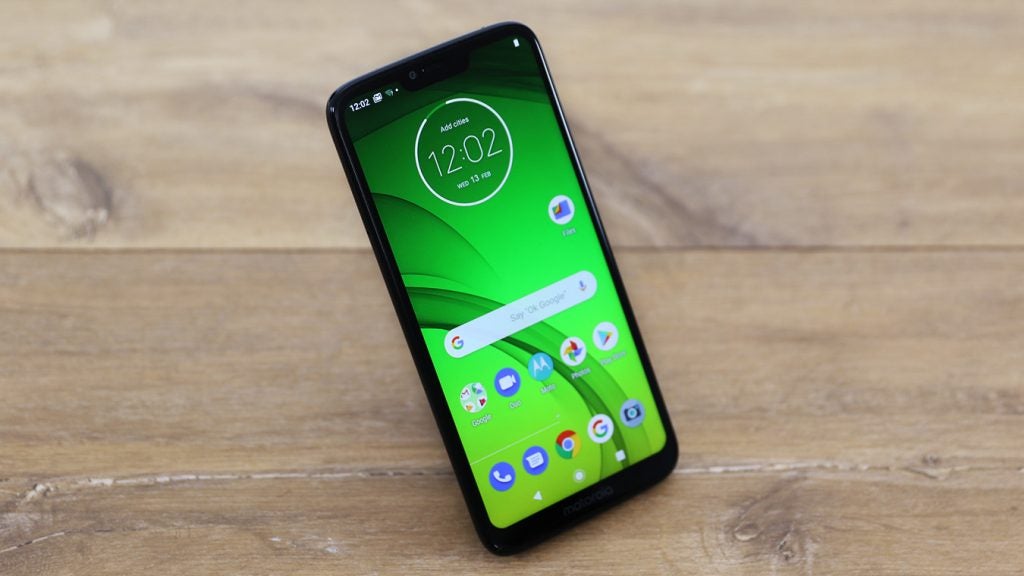
The viewing angles of the Moto G7 Power’s display are good – even at extreme angles, there’s no obvious colour distortion.
Moto G7 Power – Performance
Like most other phones in the G7 range, the Moto G7 Power is powered by a Qualcomm Snapdragon 632 CPU, 4GB of RAM, and an Adreno 506 GPU.
Even though the Moto G7 Plus features a more powerful CPU – a Snapdragon 636 – the Geekbench 4 multi-core score I got with the G7 Power (4585) isn’t far behind what Trusted recorded with on the G7 Plus (4590).
Running the Slingshot Extreme benchmark test – a 3DMark mobile benchmark designed to exclusively test graphics processing power – I recorded an OpenGL ES 3.1 score of 513.
That’s quite a bit under what Trusted saw with the G7 Plus, which scored 945 in the same benchmark, a fact I’m chalking up to the presence of the more advance Adreno 509 GPU.
That said, when testing out the battery of the Moto G7 Power, I played me a lot of Asphalt 9, and not at any point did that racing game suffer from any obvious slowdown or stuttering.
In terms of how it performs for general phone operations, it’s smooth going. I was able to burn through several tabs in Chrome at once, with pages loading quickly over 4G or Wi-Fi.
Call quality however is fairly average. Whether I was talking to someone over Bluetooth headphones or through the standard receiver, voices were often on the muddy side. The speaker was loud enough for me to be able to make out the person on the other end if I pushed the volume up, but generally, I wasn’t that thrilled with the call quality.
Moto G7 Power – Software
The Moto G7 Power runs Android 9.0 out of the box, and for the most part, the experience is more or less the same as what you’d get on stock Android.
Google apps like Maps, Gmail, Drive and so on are bundled into a folder, with a few other essential Google apps, like Play, Photos and Messages, placed nearby. You’re unconsciously invited to order things around the way you want them.
The user interface is clean, clear, with no bloatware cluttering up the place, though, as is the case with other phones in this range, things like Google’s ‘Digital Wellness’ feature – which lets you set timers for certain apps, useful for Twitter addicts, is not currently present here.
The circular clock widget that sits top and centre on the homescreen features a battery counter, as well as acting like a shortcut to the Calendar app. Whether intentionally or not, the circular shape also complements the round camera module on the back.
Another thing I should mention is the default notification tone. It’s horrible.
It’s called ‘Moto’ and the first thing you should do when you get this – or any phone from the Moto G7 range – is head to Settings > Sound > Phone ringtone and swap that for something gentler, like ‘Natural’ or ‘Momentum’ – or add your own tone if you want. Trust me, you’ll want to change this.
Aside from that, the overall user interface is gentle and easy-going, and looks more like something you’d expect to see on, say, the Google Pixel 3, or the Huawei Mate 20 Pro.
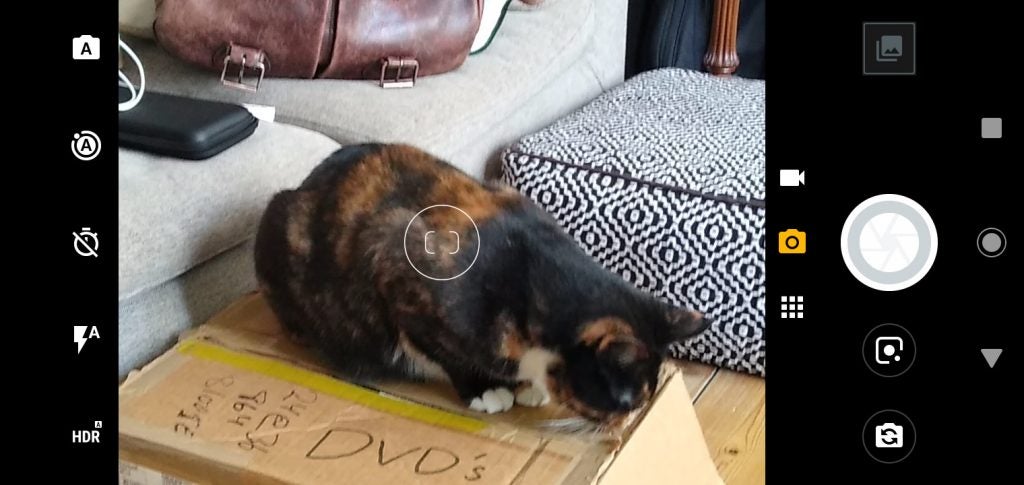
The Moto G7 Power’s camera app is relatively straightforward, with little in the way of controls and shooting modes.
Moto G7 Power – Camera
Unlike the Moto G7 and Moto G7 Plus, the G7 Power doesn’t feature a dual-lens rear camera. Instead, you get a single 12-megapixel f/2.0 lens on the back and an 8-megapixel shooter on the front of the device.
Both of the Moto G7 Power’s cameras performs best when there’s an abundance of natural light hitting those sensors. Shots taken outside on bright, sunny days, or even indoors, with plenty of light filtering in through windows look much better than pictures in artificially lit areas.
Take the shots of the flowers, taken at midday, for example. Here, you can see that there’s plenty of detail and definition on the petals.

While the subject is nicely focused, this result is one of many attempts. Moving objects, like flowers drifting gently in the breeze, can cause headaches for the Moto G7 Power.
That said, the sensor tends to exaggerate light sources, and the G7 Power only blows out the brighter areas even more when it’s dark. Pictures taken with the HDR mode tending to greatly exaggerate the colours of artificial lights, too. See the two examples below of the Thames shot late at night – whether you’re shooting in SDR or HDR, there’s plenty of noise.
To make matters worse, you can’t lock a focal point in the frame and meter from somewhere else.

London, Southbank, 12:45pm, 18/02/19 – SDR

London, Southbank, 12:45pm, 18/02/19 – HDR

London, Southbank, 18:37pm, 18/02/19 – SDR

London, Southbank, 18:37pm, 18/02/19
While there are fun photo and modes like spot colour, panorama, life fitler, stop motion and timelapse, there’s no low light mode for nighttime or interior shots. The flash is also pretty puny, but then again, it’s a single LED flash, so you can’t expect it to perform as well as something with a double LED.

Daytime selfies are fine and dandy (depending on the subject) but at night? Well…
The cameras are also sometimes slow to take shots, especially of moving subjects. Whether you’re snapping your pet cats, tipsy mates in the pub, or flowers moving in the breeze, with continuous autofocus turned on, it can sometimes take up to two seconds for the camera to do its thing, after which time, the moment might have passed, or you just end up with a blurry shot. This doesn’t always happen, but when it does, it’s very annoying, and not something I was able to mitigate myself by switching to manual focus.
Digital zoom lets you magnify shots by up to 10x, but as there’s no mechanical components here – the ‘zoom’ is artificial as it simply enlarges whatever’s in the frame – at anything higher than 2x zoom, details will be lost, and everything will look fuzzy and pointillistic.
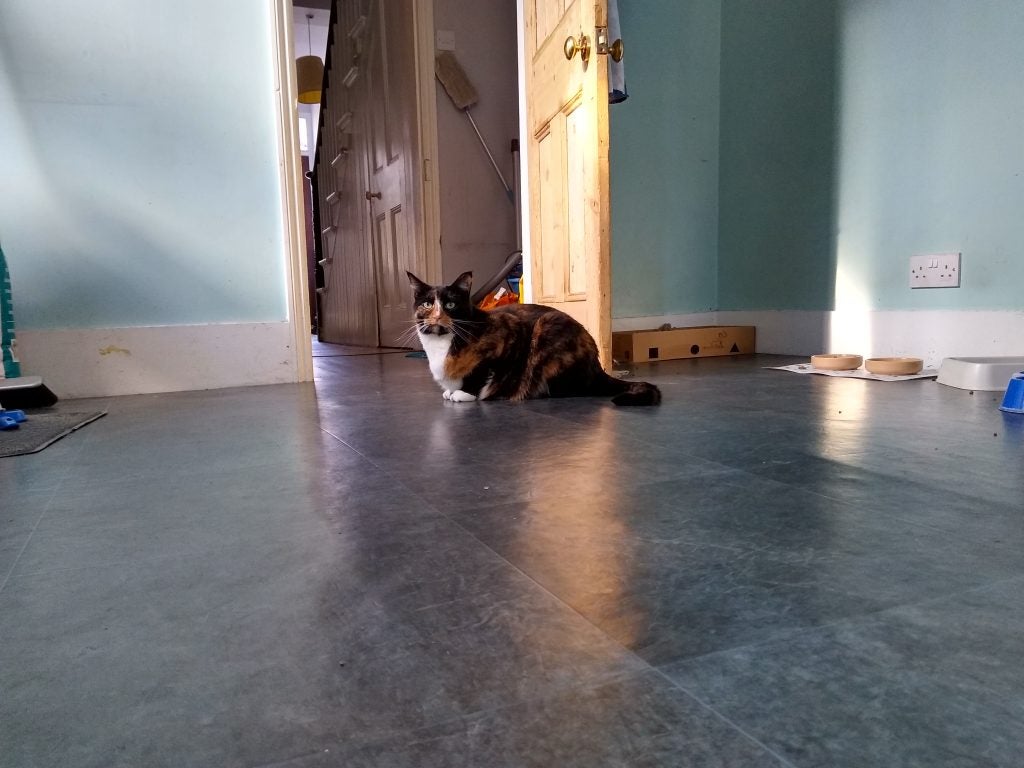
Pretty as a picture at 1x magnification…

…still plenty of detail at 2x zoom, however…

…not so hot when you zoom up to 10x.
Moto G7 Power – Battery life
The battery is by far the biggest talking point about the Moto G7 Power, so naturally, I’ve subjected this to multiple stress tests, battery drains and charging tests to give you an idea of how it’ll cope day to day.
Does Motorola’s claim of you being able to squeeze 60 hours of power out of the Moto G7 Power stand up? Almost.
Of course, your mileage may vary depending on how you use the thing – if your ‘daily use’ regimen consists of simply checking your emails on the go, scrolling through Twitter and Instagram feeds, doing the Tesco shop, then yeah, you’ll easily be able to go a day or two, without having to reach for the charger.
Even on one day when I absolutely hammered the battery, playing over six hours of Spotify, streaming over four hours of video on YouTube, half an hour of Twitter and playing turn-based strategy game Polytopia for an hour, the Moto G7 Power refused to die, holding on until the small hours.
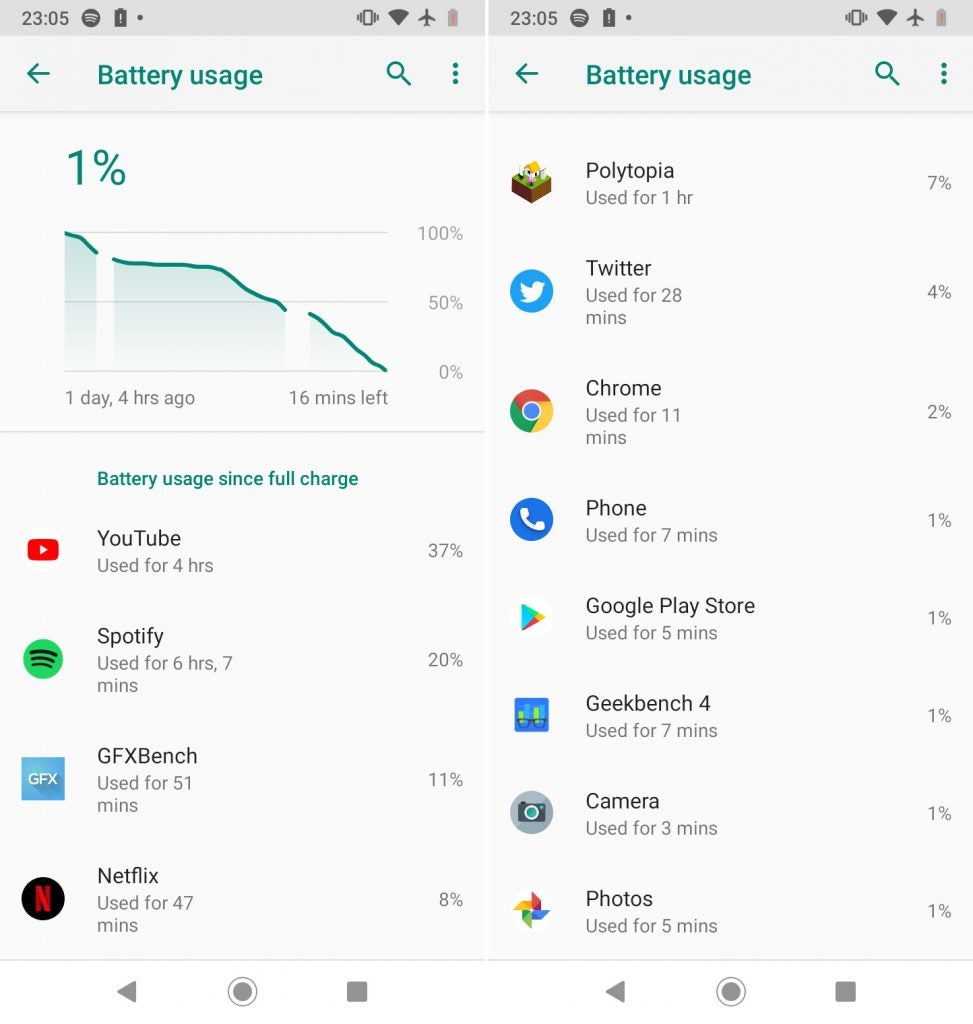
If your use is a little more intensive, you play games on the commute, download or stream Spotify playlists for on-the go listening, want to stream YouTube, Netflix, iPlayer, Now TV etc on your phone, then then you’re more likely looking at a around 20-24 hours of use before its time to plug the G7 Power back in.
That’s exceptional by any phone’s estimation, and particularly impressive when you consider how cheap the G7 Power is. Arguably, if you’re environmentally conscious, then buying a Moto G7 Power might appeal because you won’t have to to charge it as often as a less power-efficient phone.
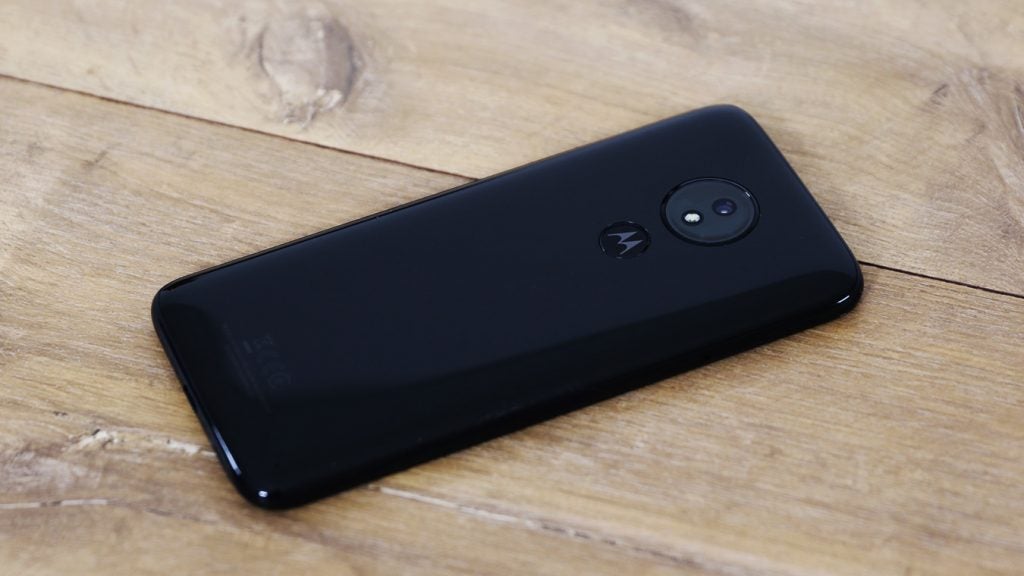
Despite housing such a big battery, the Moto G7 Power is a mere 9.4mm thick.
Half an hour of streaming Netflix over 4G with the screen’s brightness and volume set to 50% dented the Moto G7 Power’s battery by 3%, while 30 minutes of gaming (testing titles like Alto’s Odyssey and Asphalt 9) under the same display and volume conditions dipped power reserves by 2%. Playing an hour’s worth of music to the Trusted Reviews office speaker (an IKEA Eneby) via Bluetooth with the G7 Power streaming via 2.4GHz WiFi burned through 8% of the battery.
Whatever you’re doing on the Moto G7 Power, the Battery section of the menu will tell you how much power you’ve got left, in real terms; after half an hour of play/streaming, the phone helpfully told me that I had 1 day and 1 hour’s worth of juice left in the tank.
The Moto G7 Power also charges up at a fair old clip, too. You’d be forgiven for thinking that a phone with such a big battery would take an ice age to recharge, but thanks to Moto’s Turbo Power fast charging technology and the supplied 18W mains charger, you can fill up an empty Moto G7 Power in just over two hours, 20 minutes. After one hour at the pumps, you’ll be able to get that empty 5,000mAh cell around 60-65% full.
Charging up from a laptop port is much slower going – it took me just under eight hours to fully charge over a USB-A 3.0 port, using the supplied USB cable. Make sure you take that mains adapter with you.
Despite the Moto G7 Power featuring a glass back, there’s no support for wireless charging, but given that you can charge this thing up and still use the headphone jack, that’s arguably less of an issue.
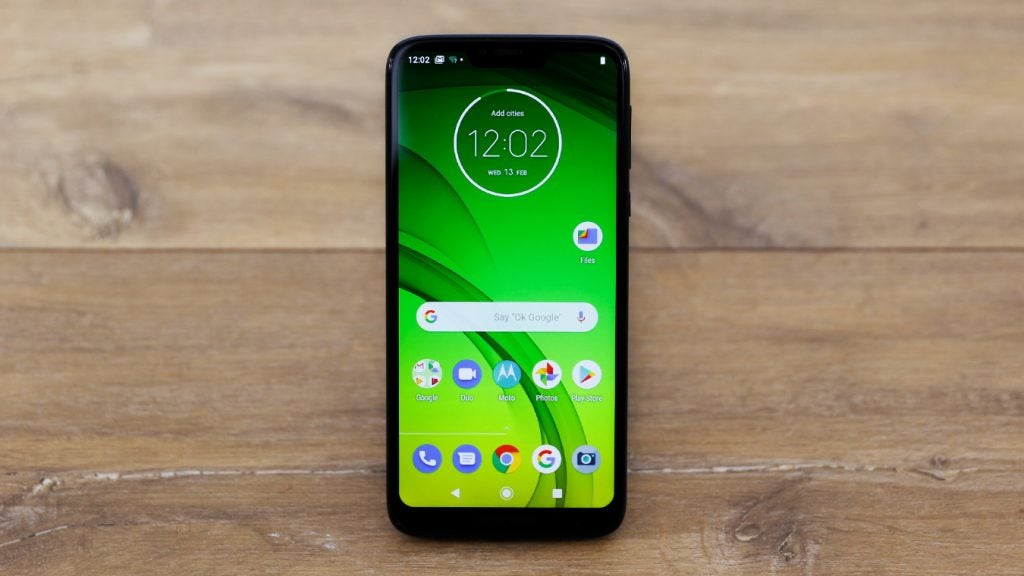
Despite its flaws, the Moto G7 Power is fantastic value for money.
Why buy the Moto G7 Power?
The Moto G7 Power represents incredible value for money. It’s £179 unlocked and SIM-free, a price which I find frankly staggering, considering how good the build quality and overall phone experience is, not to mention the powerhouse battery. On the negative side of things, call quality is so-so and the camera is weak – so if you’re on a tight budget and you’d rather have a phone with a standout camera than a Herculean battery, then you should check out the Moto G7 Plus instead. At £269, it’s more expensive, but still excellent value for under £300.
Verdict
The Moto G7 Power is a cheap and cheerful Android phone with an astonishingly good battery.
How we test phones
We test every mobile phone we review thoroughly. We use industry standard tests to compare features properly and we use the phone as our main device over the review period. We’ll always tell you what we find and we never, ever, accept money to review a product.


